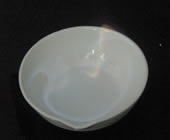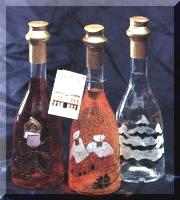Separating mixtures
Distillation
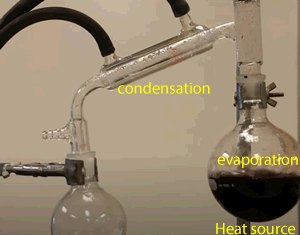
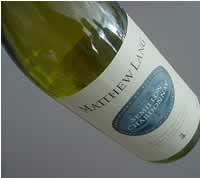
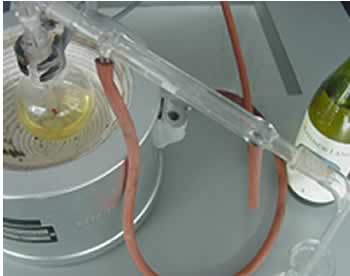
We can separate the ethanol from the water by using a distillation unit like the one shown on the left. The wine is placed in a flask and heated to 86oC. The ethanol evaporates, escapes from the water and is trapped in the condensing tube where it is converted back into a liquid.
Scan the image on the left to identify the components of the distilling unit.
Click to see an animation of how this unit works.
Click for an activity
Pure ethanol is a very flammable liquid and is often used in racing cars. Ethanol burns with a clear flame and is very difficult to detect as shown in the picture on the right. Click to see a 120kb video of how the ethanol collected from this procedure burns with a clear flame. Ethanol also acts as a local anesthetic which is why swirling Vodka or Ouzo on a very sensitive tooth relieves the pain.
